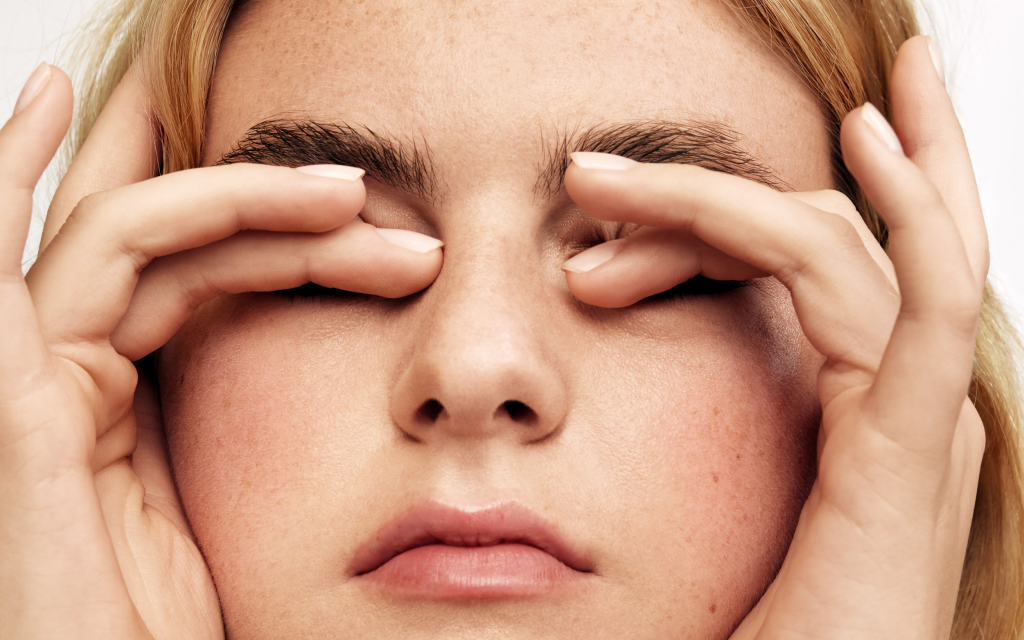Most people go through their lives without ever noticing a problem with their vision. However, if you see that you’re having trouble reading small print or that things are a little blurry when you look at them up close, then it’s likely that your vision is being affected by something. This can be frustrating, so knowing how to identify and treat your vision problems is essential.
5 Common Eye Problems
The CDC estimates that 12 million U.S. adults over 40 have some form of eye issues. One million people are legally blind, making it difficult, if not impossible, to perform routine chores. Here are five eye problems symptoms and conditions you should know about:
1. Blurred Vision (Refractive Errors)
Blurred vision problems from a refractive error, which occurs when the eye’s shape incorrectly bends light, is one of the most common conditions. Myopia (nearsightedness), hyperopia (farsightedness), presbyopia (age-related loss of near vision), and astigmatism are the most common refractive eyes problems.
Causes
The two components of your eye that concentrate images are:
- Cornea – a transparent dome covering the front of your eye that focuses light.
- Lens – sits behind the iris and focuses the image onto the retina.
Issues with the components can lead to eye symptoms such as:
- Nearsightedness (myopia) – Causes one to have clear vision up close but hazy at farther distances.
- Farsightedness (hyperopia) – Develops if the cornea has an inadequate curvature. Children typically have a more challenging time seeing closer objects than far ones. Adults experience blurring of both near and far things.
- Astigmatism – Occurs if your cornea or lens is bent more sharply in one way than another. If you have uncorrected astigmatism, you will experience vision blur.
- Presbyopia – A refractive error induced by changes in the eye’s lens due to normal aging. Presbyopia is the gradual loss of near vision, affecting the ability to focus on close objects such as text, although the ability to perceive distant things typically remains unaffected.
Treatment
Multiple vision tests and a thorough examination of your eyes will be used to determine the root of your vision issues. A blood test may also be performed if your doctor suspects a more serious underlying medical issue.
Identifying the cause of your eyesight problems is essential for effective treatment.
You may need corrective glasses or contacts if you have trouble seeing clearly.
2. Cataracts
A cataract is an eye problem that occurs when the usually transparent lens of the eye becomes cloudy. Cataract sufferers’ vision is blurred, similar to what it would be like peering through a foggy or hazed window. Cataracts obscure eyesight, making it harder to read, drive, and read facial expressions.
Causes
Cataracts typically form due to age or injury to the tissue that makes up the eye’s lens.
The risk of cataracts is elevated in those with specific hereditary genetic abnormalities that cause other health issues. However, other visual problems, prior eye surgery, and medical diseases like diabetes can also contribute to the development of cataracts. Cataracts can also develop from using steroids for an extended period.
Treatments
Glasses with more magnification and better lighting can help temporarily if your cataracts aren’t too advanced.
However, cataracts worsen over time, so you will require lens removal and replacement surgery at some point.
3. Diabetic retinopathy
A vision issue called diabetic retinopathy occurs when high blood sugar levels damage the retina at the rear of the eye (retina) in people who have diabetes. If it goes untreated and undetected, it can lead to blindness.
However, diabetic retinopathy sometimes takes several years to progress to a point where it could jeopardize vision.
Causes
The retina receives blood through a network of capillaries, which must always remain open.
These blood arteries can be damaged in three distinct ways by a chronically high blood sugar level:
- Background retinopathy, where tiny blood vessel bulges form and occasionally bleed without compromising vision.
- In pre-proliferative retinopathy, blood vessel alterations are more severe and extensive, leading to increased intraocular hemorrhage.
- Vision loss may occur due to proliferative retinopathy, characterized by the growth of fragile new blood vessels and scar tissue on the retina.
Treatment
Diabetic retinopathy treatment is only required if screening reveals severe complications that put your eyesight in danger.
Before your vision problems reach this point, you should monitor and manage your diabetes.
More advanced cases of diabetic retinopathy are typically treated with eye surgery to remove blood or scar tissue, medicine injections, or laser treatment.

4. Glaucoma
Glaucoma is a typical eye condition that causes damage to the optic nerve that transmits visual information from the eye to the brain. Initially, glaucoma does not manifest any noticeable symptoms.
It typically worsens gradually over several years, starting with the periphery of your vision. Since this is the case, glaucoma generally is not diagnosed until a person has a routine eye exam. If you experience symptoms, you may notice things like halos or rainbows surrounding lights. Each eye is often damaged, though one may be more severely impacted than the other.
Causes
The buildup of fluid in the eye’s anterior chamber raises intraocular pressure, the most common cause of this condition.
If glaucoma is not discovered and treated in time, it can cause permanent vision loss.
It is most frequent in persons in their 70s and 80s, but it can afflict anyone of any age.
Treatment
Vision loss before you detect glaucoma cannot be restored, although you can prevent it from worsening with therapy.
The specific form of glaucoma you have will determine which treatment approach is best for you. These approaches include:
- drops for your eyes to alleviate the strain on them
- treatment with a laser, which can either unblock the eye’s drainage channels or decrease fluid production
If diagnosed with glaucoma, you’ll most likely need to schedule periodic checkups to assess your health and the efficacy of your treatment.
5. Macular degeneration
Age-related macular degeneration (AMD) is an eye illness that causes the central vision to become blurry.
Many people suffer from AMD, a significant contributor to blindness in the elderly. Loss of central vision from AMD does not lead to total blindness but can make it challenging to perform close-up tasks.
When early AMD strikes, it can impair eyesight without the sufferer realizing it. Therefore, it is crucial to undergo regular eye exams to detect AMD.
Causes
The exact origin of age-related macular degeneration is unknown. However, there are a few established risk factors, which include:
- Genetics
- Age, sex, and race
- Smoking and diet
- Blood pressure, cholesterol, and weight
Treatment
Before beginning treatment, it is essential to distinguish between the various stages and types of AMD. Early AMD is now untreatable, so your eye doctor will likely only monitor your eyes’ health with regular checks. Healthy lifestyle choices, such as a balanced diet, regular exercise, and giving up cigarettes, are also beneficial.
Nutritional supplements (vitamins and minerals) may prevent intermediate AMD from progressing to late AMD in one or both eyes. These supplements may decrease the progression of vision problems in the other eye if you already have late AMD in one eye.
Improve Your Vision with Felix Gray
You should take care of your eyes and keep them from developing vision problems with proper eye care. You can improve your eyesight in several ways, including eating right, checking in regularly, and doing eye exercises.
Felix Gray can help you improve your vision. We can also help you look good with the right designer frames and save money in the process.
Looking for glasses online? Discover the fashionable Felix Gray collection. We have the perfect pair waiting for you.
